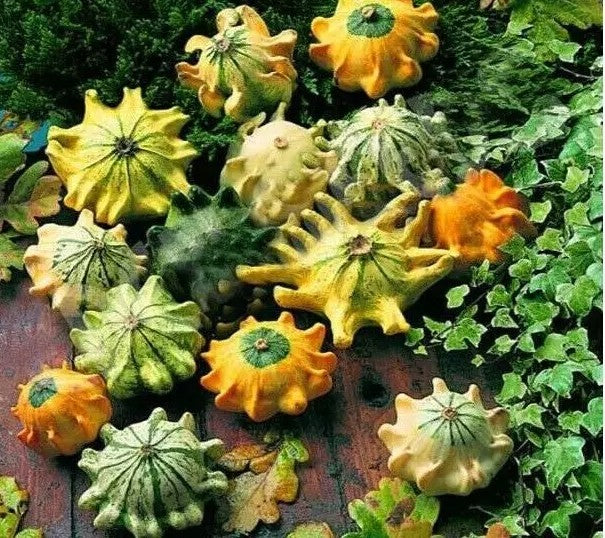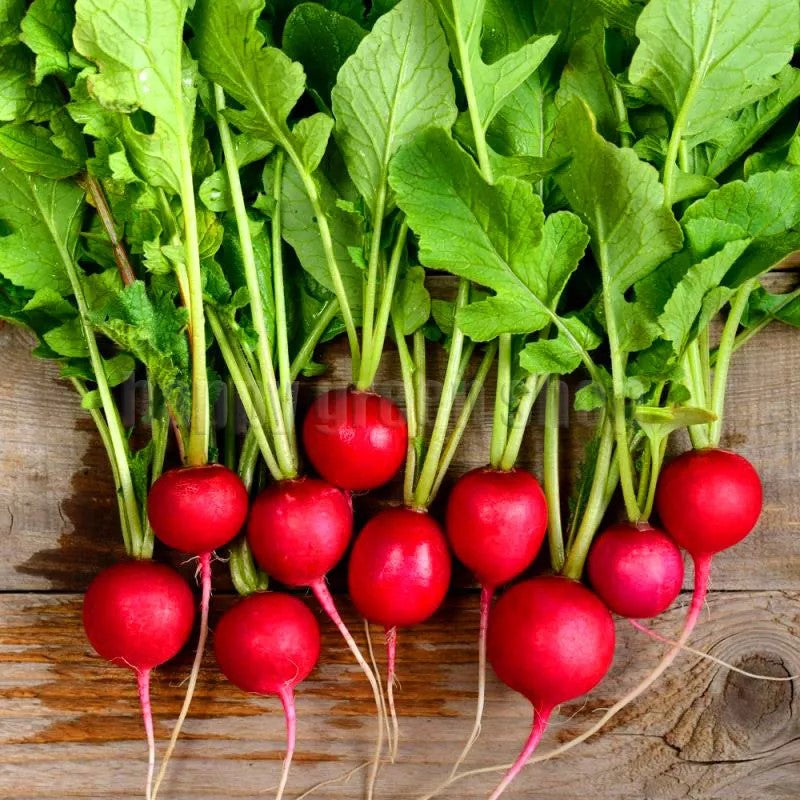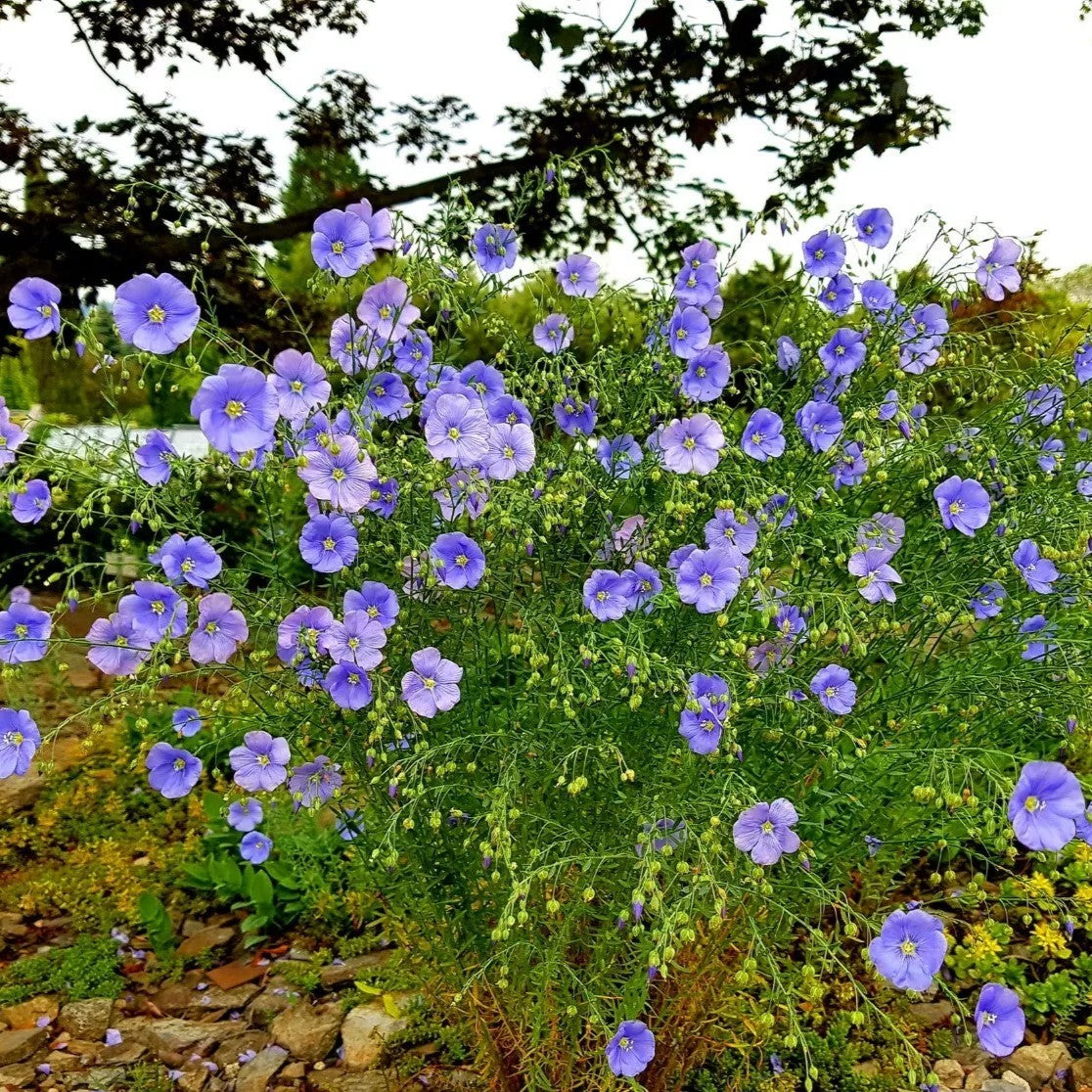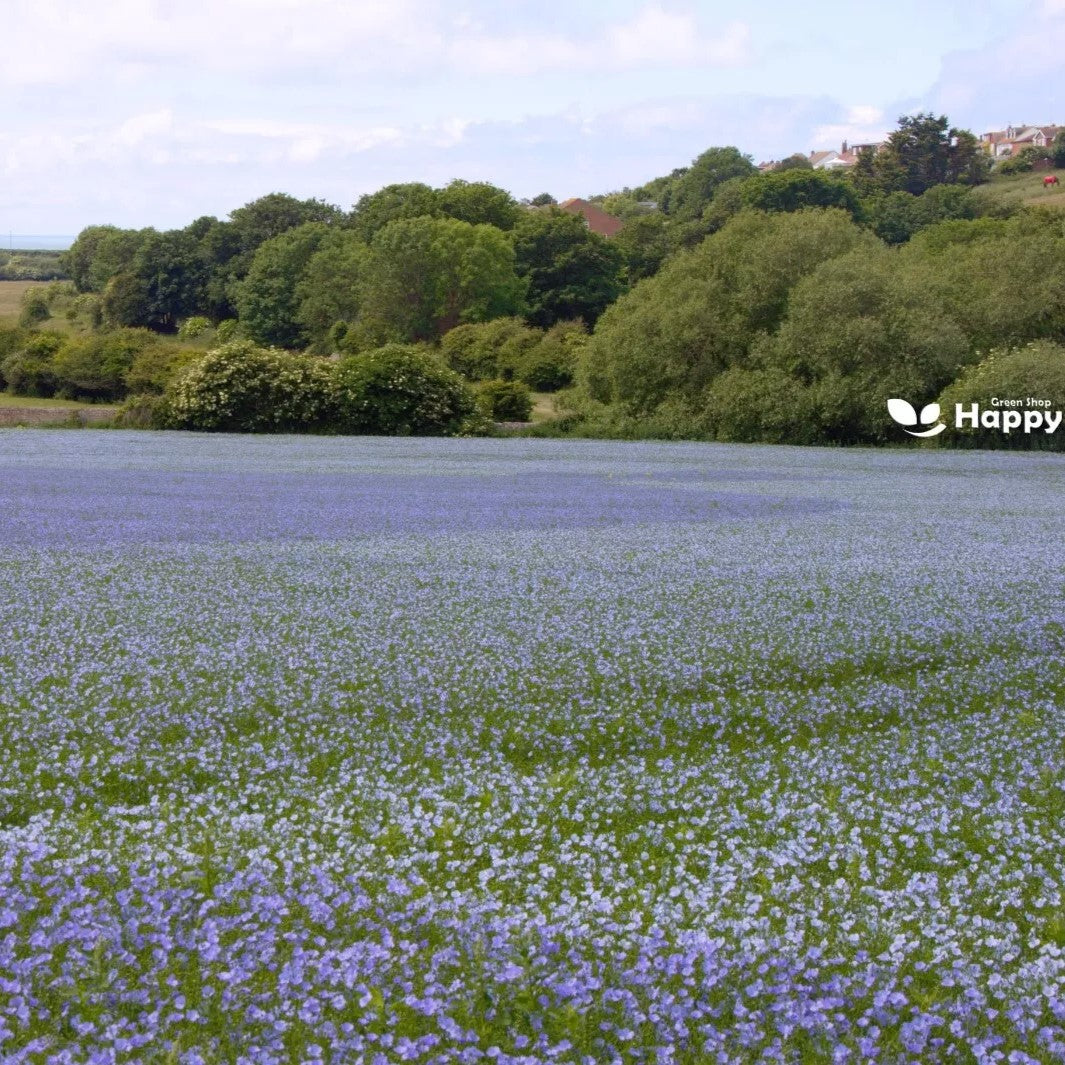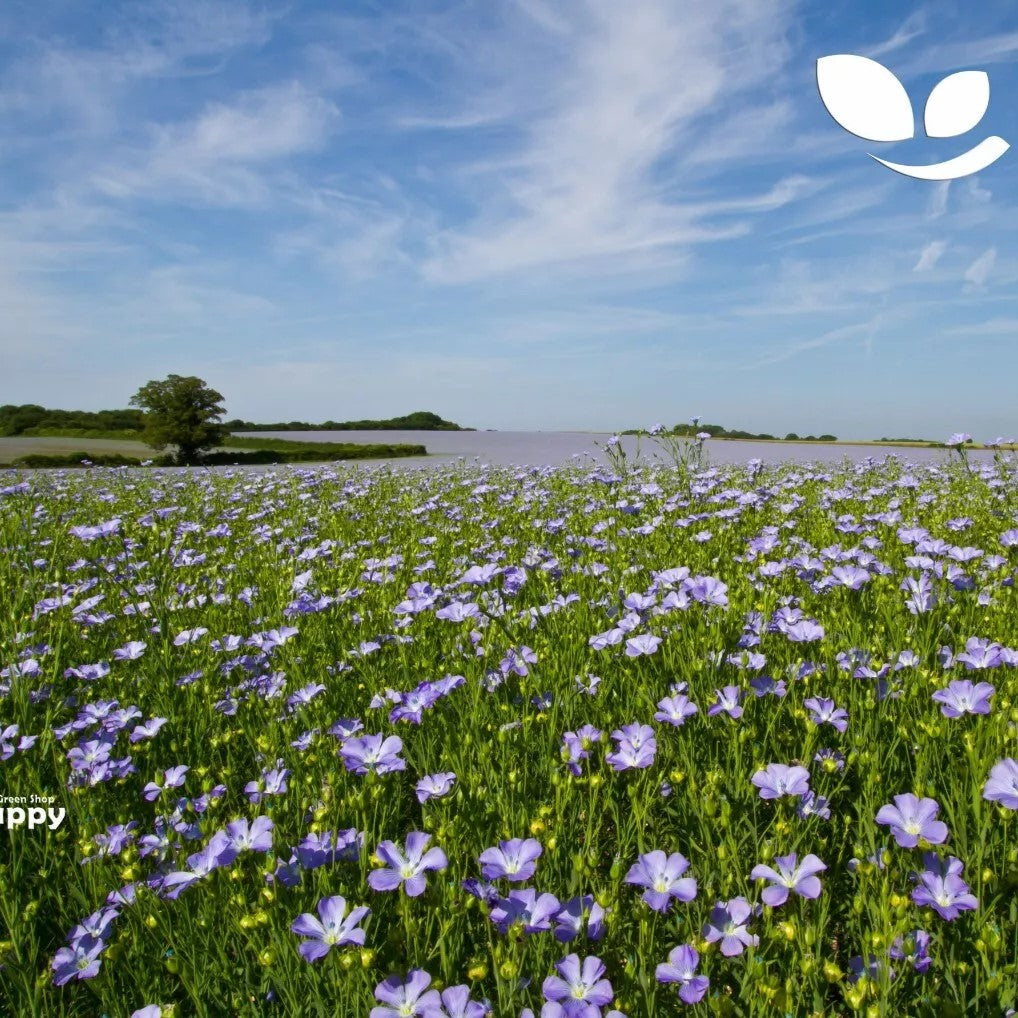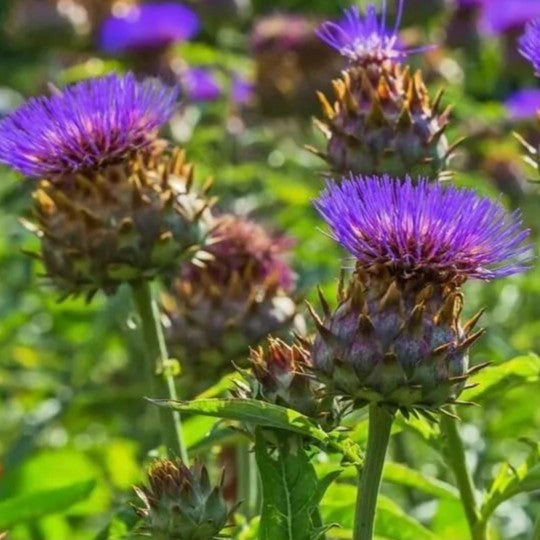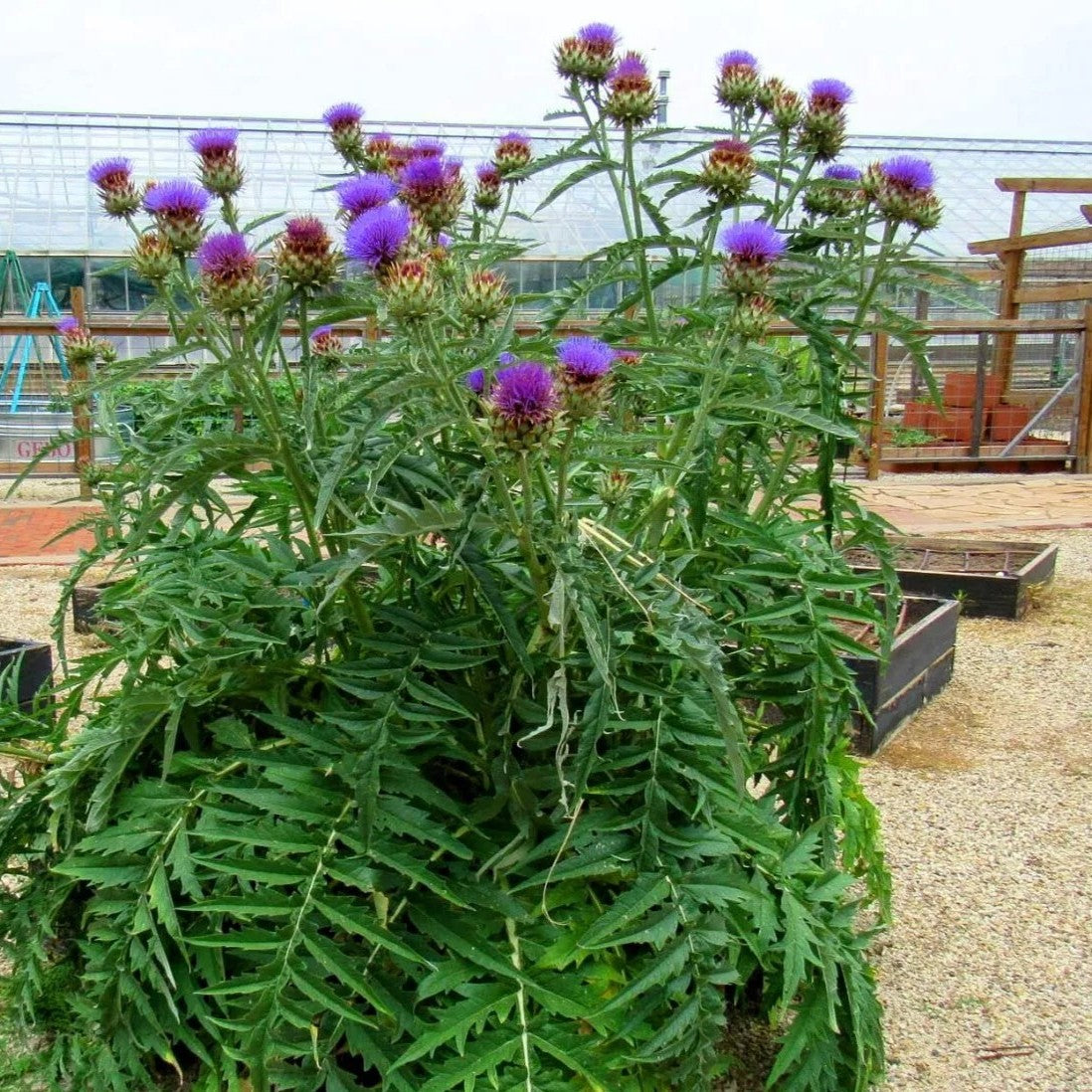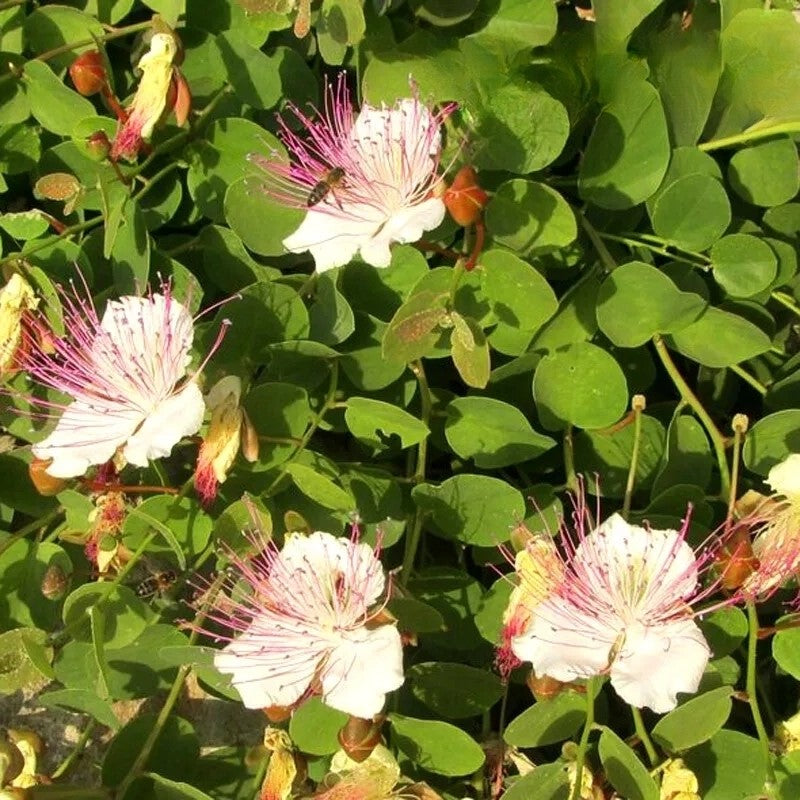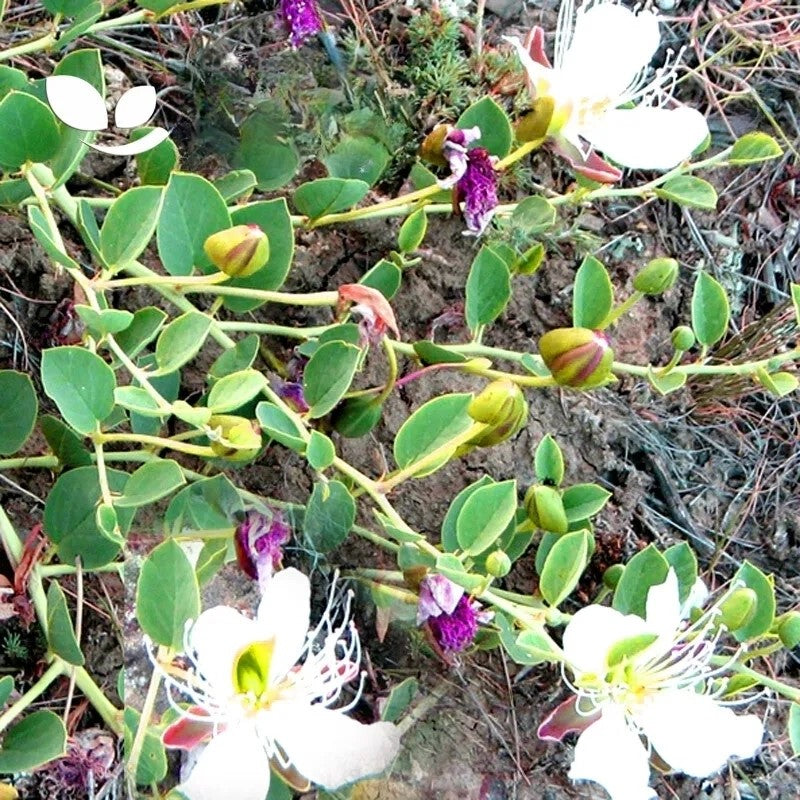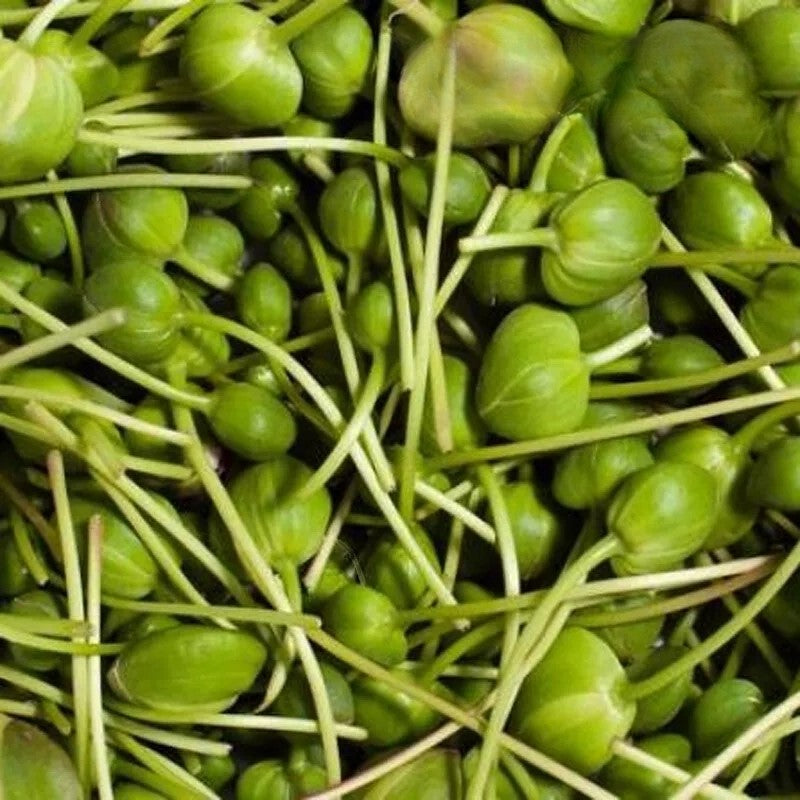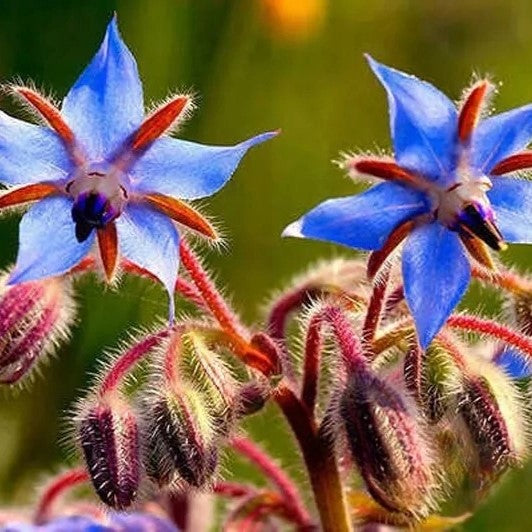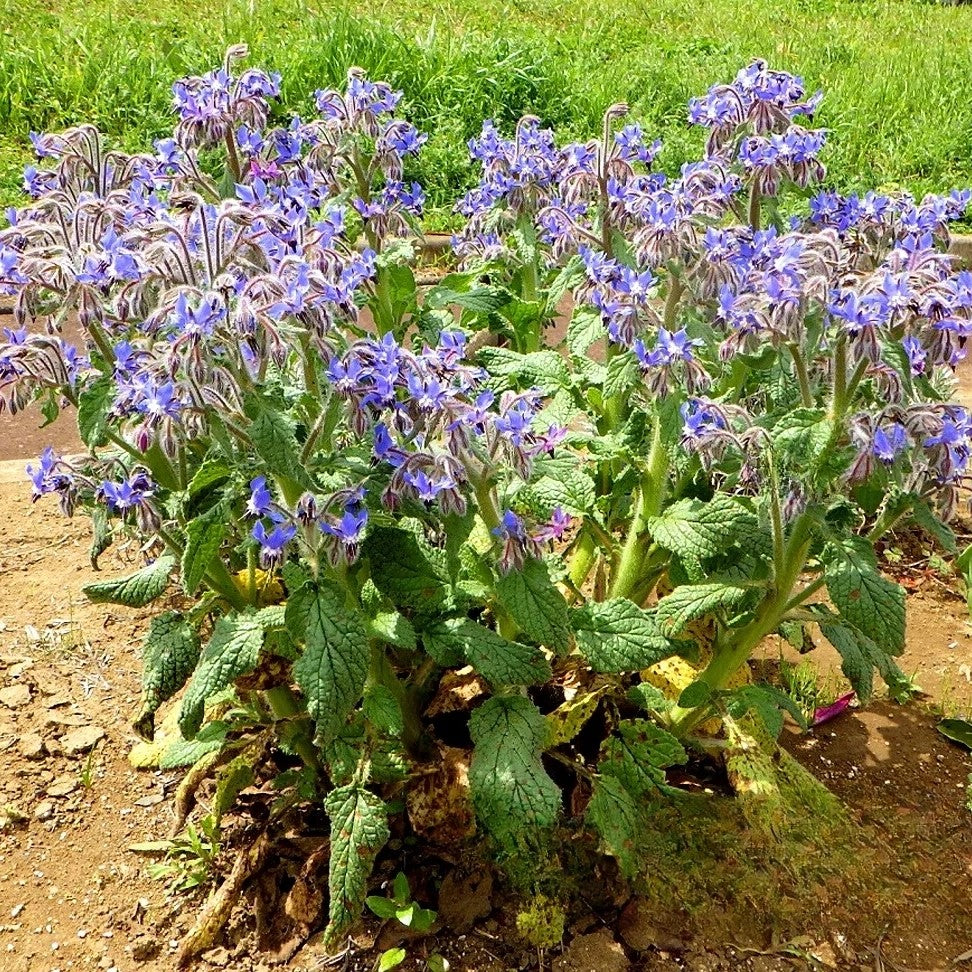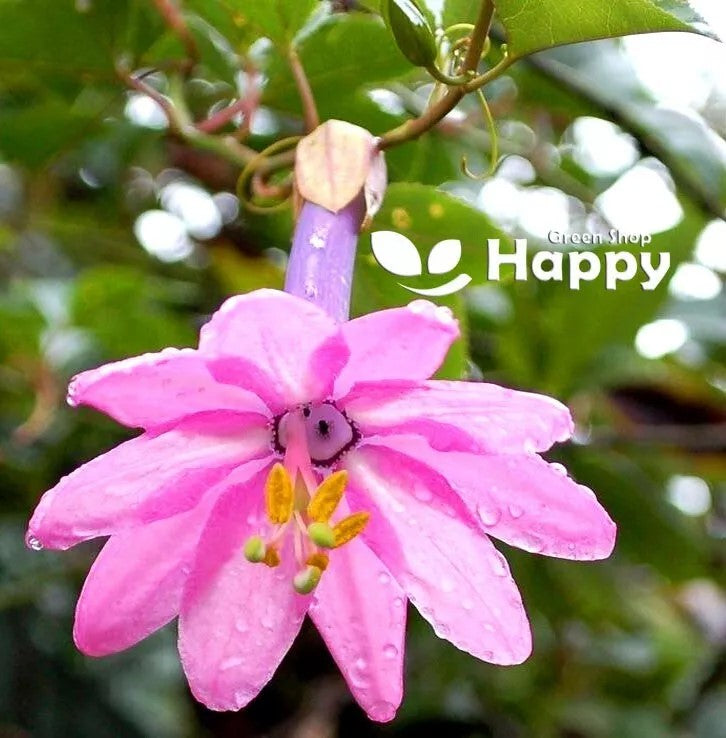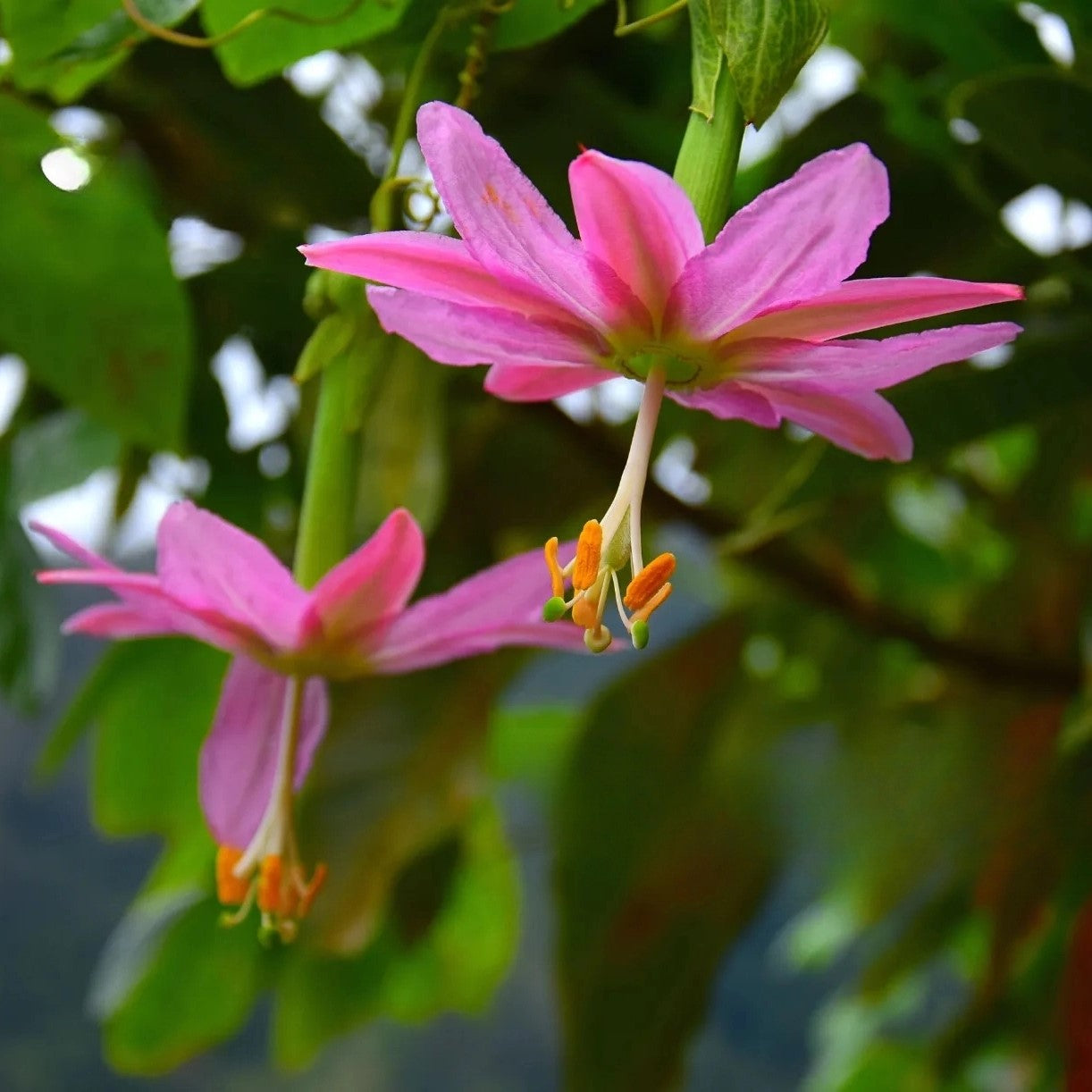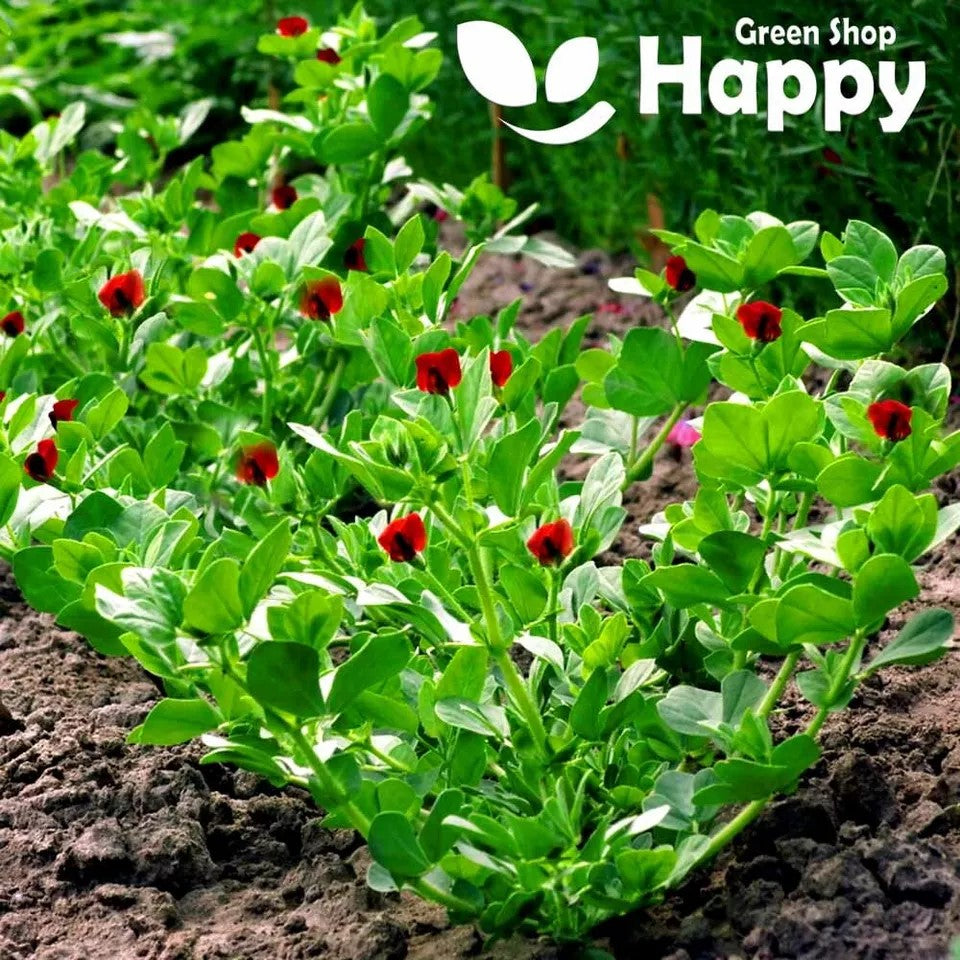Sort by:
33 products
33 products
COMMON FLAX SEEDS (Linum usitatissimum)
Common Flax is a graceful annual grown for both beauty and usefulness. Its slender stems are topped with delicate sky-blue flowers, creating a soft, natural look in borders, beds, and wildflower gardens. Easy to grow and low-maintenance, it also produces valuable seeds traditionally used for culinary and health purposes.
Why Grow "Common Flax"
-
Delicate sky-blue blooms with natural charm
-
Easy-to-grow, low-maintenance annual
-
Produces edible seeds
-
Ideal for borders, beds, and wildflower gardens
Key Features
-
Type: Annual (Linum usitatissimum)
-
Height: 40–60 cm
-
Flowering: Summer (June–August)
-
Position: Full sun
-
Uses: Borders, flower beds, wildflower areas, seed harvesting
Ideal For
-
Adding soft blue tones to borders and cottage gardens
-
Wildflower meadows and naturalized areas
-
Harvesting flax seeds for home use
-
Beginner-friendly gardening
Sowing & Growing
-
Sow outdoors: Directly into soil in spring after frost
-
Germination: 10–14 days
-
Thin seedlings: 10–15 cm apart
-
Prefers full sun and well-drained soil
CARDOON SEEDS (Cynara cardunculus)
A striking architectural plant, Cardoon brings dramatic height and bold texture to the garden. With tall, silvery-grey foliage and large thistle-like purple blooms, it makes an impressive focal point in borders and ornamental plantings. Closely related to the globe artichoke, cardoon is also valued as an edible plant, with its blanched leaf stalks enjoyed as a Mediterranean delicacy.
Why Grow "Cardoon"
-
Bold, architectural plant for dramatic garden displays
-
Stunning purple thistle-like flowers loved by pollinators
-
Silvery foliage adds unique texture
-
Edible stems prized in Mediterranean cuisine
Key Features
-
Type: Perennial (Cynara cardunculus)
-
Height: 150–200 cm
-
Flowering: Summer (July–September)
-
Position: Full sun
-
Uses: Borders, architectural displays, edible gardening, pollinator-friendly
Ideal For
-
Adding dramatic height and texture to borders
-
Pollinator-friendly and wildlife gardens
-
Edible gardening with a Mediterranean twist
-
Cottage and ornamental gardens
Sowing & Growing
-
Sow indoors: 6–8 weeks before the last frost
-
Sow outdoors: After frost danger has passed
-
Germination: 14–21 days
-
Space seedlings: 90–120 cm apart
-
Prefers full sun and rich, well-drained soil
Caper Bush – Seeds (Capparis spinosa)
The Caper Bush is a resilient Mediterranean perennial valued for its flavorful buds and aromatic leaves. Its small, edible buds are commonly pickled and used to enhance salads, sauces, fish dishes, and Mediterranean recipes. This drought-tolerant plant adds both culinary and ornamental value to gardens.
Slow-growing but hardy, the Caper Bush thrives in sunny, well-drained locations and can tolerate poor soils. Over time, it develops attractive sprawling branches and delicate white to pink flowers, followed by round seed pods.
How to Grow
-
Sow indoors: February – April
-
Sow outdoors: Spring in warm climates
-
Position: Full sun
-
Soil: Well-drained, sandy or rocky soil; avoid waterlogged conditions
-
Care: Water sparingly; prune to maintain shape and encourage flowering
Key Features
-
Hardy Mediterranean perennial with edible buds and aromatic leaves
-
Small, flavorful buds ideal for pickling and cooking
-
Drought-tolerant and low-maintenance
-
Produces delicate white-pink flowers and round seed pods
-
Suitable for sunny gardens, rockeries, or container cultivation
Harvest
-
Harvesting period: 2–3 years after sowing for mature buds
-
Pick buds before flowering for pickling and culinary use.
Short Tip
Provide full sun and well-drained soil to encourage healthy growth and abundant buds.
Borage – Seeds
(Borago officinalis) – Edible Flowers & Pollinator Magnet
Borage, also known as the starflower, is a fast-growing annual herb admired for its vivid blue, star-shaped flowers and fuzzy, cucumber-flavored leaves. A favorite of bees, butterflies, and other pollinators, it makes an excellent addition to herb gardens, vegetable patches, or pollinator-friendly borders. Both flowers and young leaves are edible – perfect for garnishing salads, desserts, drinks, or freezing into ice cubes.
Key Features
-
Plant type: Annual herb
-
Height: 50–70 cm
-
Spread: 30–40 cm
-
Flowers: Bright blue, star-shaped
-
Foliage: Grey-green, hairy leaves with cucumber flavor
-
Position: Full sun to light shade
-
Soil: Moderately fertile, well-drained
Ideal For
-
Herb & cottage gardens
-
Attracting pollinators (especially bees)
-
Edible flowers & herbal teas
-
Companion planting with tomatoes, strawberries, and courgettes
Sowing & Growing
-
Sow outdoors: April–June, direct in soil, 1 cm deep.
-
Germination: 7–14 days.
-
Spacing: Thin to 30 cm apart.
-
Flowering: June–September.
Care Tips
-
Easy to grow and self-seeding – will naturalize readily.
-
Pinch back growing tips for bushier plants.
-
Collect flowers regularly to encourage continuous blooming.
-
Water in dry spells but avoid overwatering.
Banana Passionfruit Seeds (Passiflora mollissima)
Banana Passionfruit is a vigorous, fast-growing perennial vine with exotic, banana-shaped fruits and striking passionflower blooms. Ideal for trellises, pergolas, and garden screens, it thrives in sunny, well-drained locations. Hardy and ornamental, it attracts pollinators while producing unique, edible fruits.
What Makes It Special
-
Exotic banana-shaped fruits with sweet, aromatic pulp
-
Striking passionflower blooms
-
Vigorous, fast-growing, and pollinator-friendly
Key Features
-
Botanical name: Passiflora mollissima
-
Perennial vine
-
Height: 3–6 m spread
-
Bloom time: Summer to autumn
-
Fruit: Edible, banana-shaped, aromatic
Ideal For
-
Trellises, pergolas, and garden screens
-
Pollinator-friendly plantings
-
Fruit gardens and ornamental vines
Sowing
-
Sow indoors year-round in a warm environment
-
Cover seeds lightly with soil
-
Germination: 3–6 weeks at 20–25°C
-
Space seedlings 1–2 m apart
-
Fruits and flowers develop 1–2 years after sowing
Asparagus Pea – Seeds (Tetragonolobus purpureus)
Asparagus Pea (Tetragonolobus purpureus) is a vigorous, climbing annual producing clusters of attractive, purple-pink pea-like flowers. Its edible pods have a mild, asparagus-like flavor, making it perfect for both ornamental and culinary use. Blooming from summer to autumn, this versatile plant thrives on trellises, fences, and obelisks, adding vertical interest, color, and delicious harvests to your garden.
Why Grow "Asparagus Pea"
-
Vigorous climber with purple-pink flowers
-
Edible pods with a mild asparagus-like taste
-
Long flowering and harvesting season
-
Perfect for vertical gardening on trellises and fences
Key Features
-
Type: Annual climber (Tetragonolobus purpureus)
-
Height: 150–180 cm
-
Flowering: Summer to autumn
-
Position: Full sun
-
Uses: Trellises, fences, obelisks, edible gardens, cut flowers
Ideal For
-
Vertical displays in small or large gardens
-
Edible and ornamental gardening
-
Container and patio planting
-
Gardeners seeking climbers with attractive flowers and tasty pods
Sowing & Growing
-
Sow indoors: February–April
-
Sow outdoors: After last frost in well-drained soil
-
Germination: 10–20 days at 15–20°C
-
Space seedlings: 25–30 cm apart
-
Provide support for climbing
Showing 33/33



